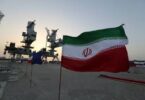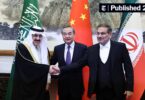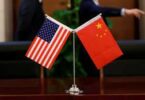The loans acquired by the last PML N government, at high rate of interest with tight repayment period, from China for 12000 MW has turned into a deep quagmire for the national economy, which is almost at standstill, due to prevailing economic meltdown across the world. Pakistan has now requested for the relaxation of payment obligations of Chinese debt worth $30 billion, the annual repayment installment of which are due from the next fiscal year. Relaxation has been sought for in the shape of lowering markup accrued thereon and extension in the repayment period from the existing 10 years to 20 years, which is built in the existing electricity tariff structure, adding to the cumbersome capacity payment liability. The liability will swell to Rs.1500, annually within the next few years. These two concessions, if granted, will save about $ 500 to $ 550 million annual outflows.
The plea for power sector debt rescheduling with low rate of interest was made during the President Dr.Arif Alvi visit to China last month. The Chinese leadership has referred the matter to National Development and Reforms Commission for discussion with mostly state owned financial institutions to find a way-out.
The stance taken by multilateral donor agencies in 2018 on Chinese loans acquired by the previous government for CPEC related projects stands vindicated, although nobody knew at that time that a viral pandemic will originate in China and spread across the globe. The International Monetary Fund (IMF) former Managing Director, Christine Lagarde had told in press conference in Bali in referred to transparency issues of debt acquired from China by the previous government. Earlier, the IMF Chief Economist, Maurice Obstfeld had cautioned against acquiring excessive debts on high rate of interest.
Planning Commission had then promptly responded by giving a vague rebuttal. Spokesman of the commission had claimed that repayment of loans of actualized projects under CPEC worth $28 billion will start from the fiscal year of 2020-21 with annual installment of $ 300-400 million, which will gradually rise to about $3.5 billion by fiscal year 2024-25. The statement, however, did not give figures about the exact quantum of annual outflows with a timeline, which has now come to light. The spokesman had contended that Pakistan opted for Chinese investment due favourable financing arrangements and had tried to allay the impression of its being identical to Sri Lankan or Malaysian models.
Another multilateral donor agency, the Asian Development Bank (ADB) had cautioned Pakistan against obtaining expensive loans for mega projects in December, 2018. The ADB Country Director Naohong Yang had cautioned Pakistan to be watchful in handling the Railway mainline ML1 project at a cost of $8.2 billion. She was of the view that ML-1is very expensive mega project and the government needed to have explored all possible ways to make sure that the project would turn out financially sustainable. It merits mention that in the present government, the planning commission had floated the proposal of third party audit of the cost estimates of ML-1, but the previous government agreement on this project had slammed the door on third party audit and the proposal did not materialize. It remains to be seen that how far favorably China entertains the present government request for lowering the mark-up rate on loans acquired for now operational power projects and allows extension in the repayment schedule from 10 years to 20 years.






